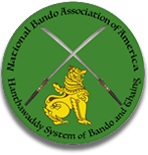According to documents of the Venerable Mogok Sayadaw (1911), tribes and clans of Northern India, Southwestern China, and Southern Tibet migrated into the lands now known as Myanmar [formerly known as Burma] 1000 years before the birth of Christ Jesus. With its dense jungles, high mountains and hostile weather, survival was very difficult. Some of these tribes developed systems of survival based on observations of indigenous animals that evolved over thousands of years. These ancient tribesmen were animists, worshiping nature and practicing shamanism. Since there was no written language at the time, they developed Myths, Ceremonies, and Rituals to pass on the knowledge to their young, insuring the tribe’s survival.
One of the earliest tribal rituals was to perform animal dances such as the Eagle dance, the Cobra dance, the Tiger dance, and etc. Tribal warriors began to add to these dances techniques of strikes, blocks, traps, jumps and rolls, imitating the movements of animals.
This knowledge provided information and guidelines for the tribe members to live by. Besides medical and seasonal information, it also provided the strategies and methods for hunting food and protecting the tribe from hostile raiders.
As time passed, these protective or combative strategies and techniques were passed from generation to generation through myths (stories), dance and rituals. They continued to mature over hundreds of years and became a deadly fighting system. However, with invasion of Myanmar [Burma] by the British in the 1800’s, many of these systems along with their teachers disappeared during British colonial rule beginning in the 19th Century and following World War II.
Many systems were lost, but in the 1940’s the National Bando Association under the direction of Grandmaster U Ba Than Gyi brought together the masters of the various animal systems to reorganize and systematize the ancient fighting arts of ancient Burma. Only nine systems were introduced to the United States by Grandmaster U Ba Than’s son, Dr. Maung Gyi.
Grandmaster U Ba Than Gyi began to see that once these foundational principles could be discerned, articulated and removed from needlessly mythic contexts, a hierarchy of principles, strategies, tactics and techniques could be constructed. This would provide, he reasoned, a coherent, comprehensive, and consistent approach to martial disciplines across virtually all-stylistic lines. The Elder Gyi established this structure. He organized, sifted, and classified his tremendous wealth of knowledge gained from hundreds of masters over many years.
In Elder U Ba Than Gyi’s approach, a set of combative behaviors was termed as a system. The system dealt with offense, defense, counter-offence and the like. The system consistently utilized the pervasive and sound underlying principles Dr. Gyi’s father had discovered to formulate reasoned responses within a chosen context. For example, this meant that a large and heavy man chose Bull or Python.
Elder Gyi removed other indigenous components of the behaviors that he felt were not necessary to understanding and manifesting the underlying principles. An example of these “removed” components could be beliefs in numerology, astrology and various superstitions.
Instead of creating a new mythology, the Elder Gyi took what we might recognize as a very Western and scholarly approach. He utilized the animal systems he constructed as a composite framework for particular strategic thoughts, tactical decisions and physiological weapon selection. But why did he choose animal systems to be the expository mechanism for his unique synthesis of fundamental cross-style principles? Why not a geranium style?
The answer remains rooted in myth shared cross-culturally down to the present day in numerous cultures, and across racial/ethnic boundaries. For example, there is the powerful German Eagle (and the American Eagle), the Russian Bear. Further, family crests in Europe feature animals of certain types as symbols for the family unit.
Dr. Gyi explains that we can only conclude, therefore, that a fundamental and powerful part of the human psyche is clearly fascinated with and identifies with animals.
Grandmaster U Ba Than Gyi chose the animal systems as unique repositories of the various principles for a wide variety of reasons, not the least of which was a three-fold analysis of why martial artists had instinctively imitated animals historically. First, there seemed to be a mystical attachment to certain animals along historic and cultural lines which increased the likelihood of students undertaking rigorous training to master the system. Second, we are humans feel in awe for these animals and the grace of their motions. Thirdly, we feel that by acting as an animal, we escape from ourselves and in turn liberate ourselves from societal strictures of behavior and response. We liberate our instinctive levels of personal physical capabilities, what other systems may attribute to chi, ki, or prana energy.
Each animal possesses different characteristics in size, strength, stamina, weapons, and targets. Their fighting and survival strategies are unique to the animal’s temperament and spirit. We study animal systems for 3 reasons:
1. To pay tribute to the spirits of the regal animals of the wild
2. To understand their survival strategies as predators and prey
3. To emulate their movements so as to improve one’s martial skills
Wisdom of the Wild
Man can learn much from animals in the wild,
If we could only close the door on our human pride for awhile,
And open our minds’ eyes and ears
As predators of prey, these wild animals can teach us
Their one thousand and one ways of survival
For another thousand years
~ Saya Po, 1860
(Translated by Dr. M. Gyi)


